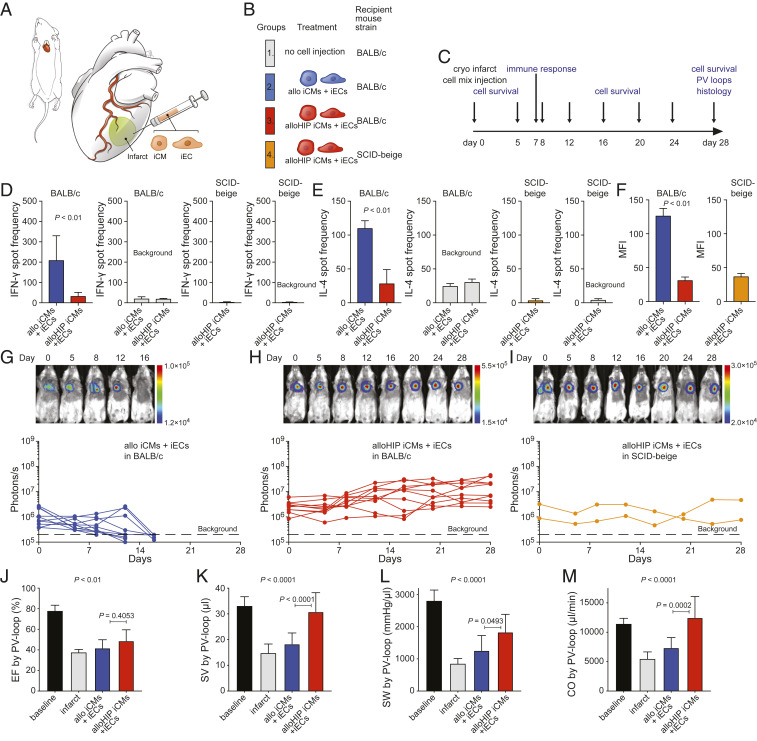Fig. 5.
Allogeneic cell mixture of HIP iECs and iCMs alleviates heart failure in infarcted hearts. (A and B) Mice underwent cryoinfarction of their heart (A) and some groups received a mixture of either allo or allHIP iECs and iCMs (B). (C) The study protocol included early immune assays, longitudinal assessments of cell graft survival, invasive hemodynamic monitoring, and histology after 28 d. (D) After 6 d, the donor-specific IFN-γ response of peripheral blood mononuclear cells (PBMCs) was assessed by Elispot assays (mean ± SD, quadruplicates of 11 animals in the allo group and 10 animals in the alloHIP group; two-tailed Student’s t test). Background spot frequencies were generated without stimulator cells. SCID-beige animals receiving allHIP iECs and iCMs served as controls (mean ± SD, quadruplicates of 10 animals). (E) Simultaneously, the donor-specific IL-4 response of peripheral PBMCs was assessed by Elispot assays (mean ± SD, quadruplicates of 11 animals in the allo group and 10 animals in the alloHIP group; two-tailed Student’s t test). Background spot frequencies were generated without stimulator cells. SCID-beige animals receiving alloHIP iECs and iCMs served as controls (mean ± SD, quadruplicates of 10 animals). (F) Donor-specific IgM antibodies were assessed on day 6 (mean ± SD, 10 animals per group; two-tailed Student’s t test). SCID-beige animals receiving alloHIP iECs and iCMs served as controls (mean ± SD, 5 animals). (G–I) The survival of FLuc+ allo (G, 10 animals) and alloHIP iEC and iCM grafts (H, 9 animals) in allogeneic BALB/c mice was longitudinally followed by BLI. All alloHIP cell grafts also survived in SCID-beige mice (I, 2 animals). BLI signals of individual animals are plotted, representative pictures are shown. (J–M) Invasive PV loop analyses (mean ± SD, 10 baseline animals, 4 infarct animals, 9 allo animals, 10 alloHIP animals; ANOVA with Bonferroni post hoc test). Parameters included EF (J), SV (K), SW (L), and CO (M).

